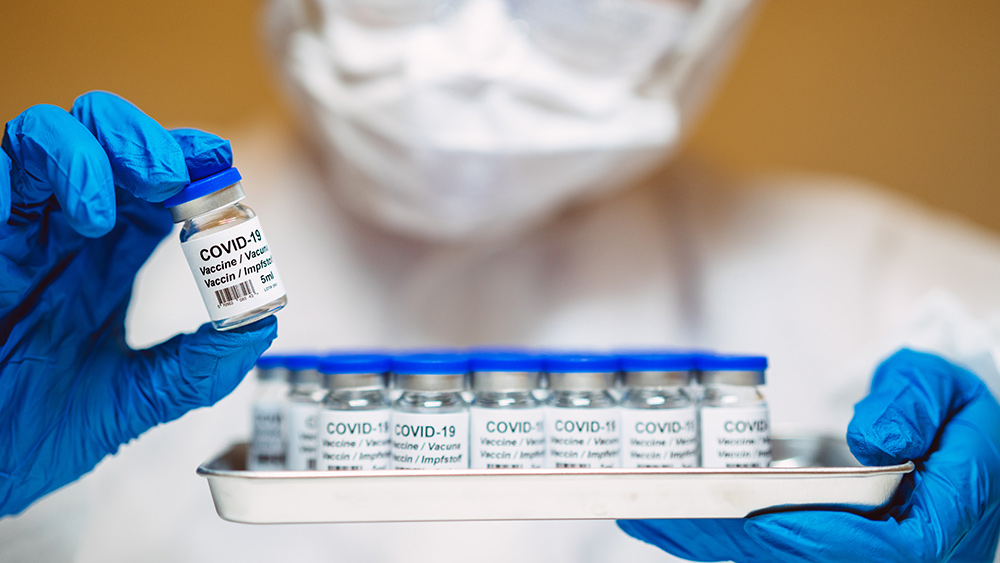 Parler
Parler Gab
Gab
- An 11-year Finnish study reveals that gum disease combined with pro-inflammatory diets triggers systemic inflammation, lasting over a decade.
- Inflammatory foods like processed meats and refined carbs exacerbate gum disease and elevate C-reactive protein (CRP), a key inflammation marker.
- Oral bacteria from periodontitis can enter the bloodstream, contributing to diabetes, Alzheimer’s and heart disease through chronic inflammation.
- Holistic approaches — including anti-inflammatory diets, aggressive dental care and rethinking dental materials — can mitigate risks.
- Scientists warn dental materials and procedures may further harm oral health, urging systemic reevaluation of oral care practices.
The Finnish findings: Beyond chronic inflammation
The Finnish study revealed that participants with both gum disease and diets rich in processed foods faced 2.4 times higher CRP levels than those with healthy gums and better diets. For example, consuming one sugary drink daily raised CRP by 17%, while fried foods worsened gum pocket depth — a key indicator of periodontitis severity. Separately, the Finnish-Russian research showed that vitamin C insufficiency (below 23 µmol/L) was twice as common among periodontitis patients, directly correlating with arterial plaque buildup. These findings demand urgent rethinking of cardiovascular disease prevention.The microbial gateway: How gum infections assault the body
Gum disease creates inflamed “sanctuaries” for pathogens like Porphyromonas gingivalis, which secrete endotoxins and cytokines — inflammatory molecules such as IL-6 and TNF-alpha. These drive chronic systemic inflammation, akin to a silent infection simmering below the radar. Dr. Purnima Kumar likens it to “a Trojan horse” — bacteria invade gums, then bloodstream, triggering cascades of damage. In arteries, this accelerates atherosclerosis, while in the pancreas, it disrupts insulin signaling, fueling diabetes. Neurological systems are no exception: gum pathogens have been detected in Alzheimer’s-affected brains, suggesting links to cognitive decline.Vitamin C and other nutrient deficiencies: The silent accomplice
The Finnish-Russian study revealed a stark reality: Vitamin C deficiency not only weakens gum tissue repair but also compounds systemic inflammation. Citrus fruits, bell peppers and broccoli — rich in this antioxidant — are often lacking in standard Western diets. Meanwhile, minerals like zinc (found in nuts and seeds) aid immune function, while omega-3s from seafood quell cytokine production. “These nutrients act as the body’s guardrails against microbial invasion,” notes Dr. Erin Zaleski. Diet overhaul must prioritize such foods, especially for those with periodontitis.The diet-driven inferno: Fueling inflammation one meal at a time
Inflammatory diets amplify oral and systemic harm. Consider a “burger-and-fries” meal: saturated fats boost gut-derived endotoxins, while refined carbs spike blood sugar, weakening epithelial barriers. Simultaneously, trans fats found in some baked goods impair wound healing in gums. To mitigate this, the study highlights the Mediterranean diet rich in olive oil, leafy greens and fatty fish, which cut CRP levels by 15–30% in gum disease patients. Probiotic foods like kefir or kimchi also diversify oral microbiota, crowding out pathogens. A 2023 trial showed that adding turmeric, a natural COX-2 inhibitor, reduced periodontal pocket depth by 1.2 mm after three months.A legacy of neglect: Historical divides shape today’s crisis
The 20th-century division of dentistry from medicine erased the mouth’s systemic role, a misstep exacerbated by commercial interests. Mercury amalgam fillings (still in use globally) leach toxic vapor, suppressing immune cells and potentially harboring biofilm-borne bacteria linked to autoimmune issues. Root canals, while lifesaving, may trap oral bacteria in necrotic tissues, later “seeding” infections elsewhere. “Dental materials are a Pandora’s box,” warns Jonathan Landsman. Meanwhile, fluoride in water and toothpaste may inflame sensitive individuals, yet alternatives like ozone therapy remain underutilized despite efficacy.Breaking the cycle: A roadmap to oral and systemic harmony
Holistic protocols now emphasize preventive strategies:- Advanced oral care: Brushing 2.0 uses biofilm-targeted toothpastes (e.g., xylitol-based) and interdental brushes.
- Dietary deep dives: Clients ditch fast food in favor of spice blends like turmeric-ginger, proven to reduce CRP by 18%.
- Targeted nutrition: Multivitamins with vitamin C (500–1,000 mg/d) and CoQ10 (200 mg/d) support gum tissue repair.
- Interventional dentistry: Laser therapy can decontaminate periodontal pockets more safely than traditional scaling.
- Material transparency: Patients demand mercury-free fillings (composite or ceramic) and biocompatibility tests for implants.
Rethinking healthcare’s architecture
The Finnish studies reveal a preventable crisis: Gum disease is not merely a dental issue, but ground zero for systemic decay. With one in two Americans suffering periodontitis — and two-thirds relying on processed foods — the call for integration across medicine and dentistry grows louder. By centering oral care in primary health narratives, society could curb epidemics of diabetes and heart disease at their roots, while reclaiming truth in healthcare free from industry influence. Sources for this article include: NaturalHealth365.com JNJ.com lakemeadowdental.comFungal contamination sparks nationwide RECALL of medicated swabs
By Ramon Tomey // Share
“The Mad, Mad, Mad World of Climatism”: A bold challenge to climate change orthodoxy
By Belle Carter // Share
Lipid-lowering effects of black seed
By News Editors // Share
Governments continue to obscure COVID-19 vaccine data amid rising concerns over excess deaths
By patricklewis // Share
Tech giant Microsoft backs EXTINCTION with its support of carbon capture programs
By ramontomeydw // Share
Germany to resume arms exports to Israel despite repeated ceasefire violations
By isabelle // Share










